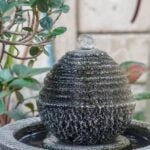Are you looking to create a harmonious and balanced home environment? Look no further than the best feng shui house designs. Feng shui, the ancient Chinese practice of creating harmonious surroundings, has gained popularity in modern home design.
From incorporating natural elements to optimizing energy flow, there are numerous ways to infuse feng shui principles into your living space. In this article, we will explore the fundamentals of feng shui in home design, the importance of natural light and airflow, as well as the best colors and materials to use. We will also discuss how to arrange furniture for good feng shui and showcase some top feng shui house designs to inspire your own home makeover.
Feng shui is more than just a trend; it’s a way of creating a peaceful and balanced living environment. By understanding the fundamentals of feng shui and how it relates to architecture, you can transform your home into a sanctuary that promotes positive energy flow and overall well-being.
From choosing the right layout for optimal energy flow to selecting furniture that enhances positivity, incorporating feng shui principles into your home’s design can have a profound impact on your daily life.
In addition to its philosophical aspects, feng shui also emphasizes practical elements such as natural light and airflow. These elements play a significant role in creating a healthy and vibrant home environment according to feng shui principles.
By embracing these fundamental concepts, you can create an aesthetically pleasing space that not only looks great but also feels great to be in. So if you’re ready to embark on a journey towards better living through design, stay tuned as we delve deeper into the best feng shui house designs to inspire your own transformative home makeover.
The Fundamentals of Feng Shui in Home Design
To achieve the best Feng Shui house designs, consider the following principles:
- Declutter and organize: A clutter-free home allows energy to flow freely. Remove unnecessary items and organize your space to create a sense of peace and tranquility.
- Balance yin and yang: The concept of yin and yang involves achieving a balance between feminine (yin) and masculine (yang) energies in a space. Incorporate both soft, flowing elements and more structured, solid elements to create harmony.
- Consider the Bagua map: The Bagua map is used in Feng Shui to determine which areas of your home correspond to different aspects of life, such as health, family, wealth, and career. By mapping these areas out in your home, you can make intentional design choices to enhance each aspect of your life.
When creating the best Feng Shui house designs, it’s important to remember that every detail matters. From the layout and architecture to the colors and materials used, each element contributes to the overall energy flow within the space. Whether you’re building a new home or looking to update an existing one, incorporating these fundamental principles will help you create a balanced and harmonious living environment.
Incorporating Feng Shui Principles Into Architecture
Feng Shui is an ancient Chinese practice that focuses on the arrangement and orientation of space in order to promote positive energy flow, or chi. One important aspect of creating a harmonious and balanced home is incorporating Feng Shui principles into architecture. This involves carefully considering the design and layout of the physical structure to optimize energy flow and create a nurturing environment.
Incorporating Feng Shui into architecture begins with the placement and orientation of the house on its lot. According to Feng Shui principles, the front door should ideally face south or southwest to welcome positive energy into the home. Additionally, the shape and layout of the house should be designed to allow for smooth energy flow throughout the space. Avoiding sharp angles and irregular shapes is also important in creating a balanced and harmonious environment.
Another key aspect of integrating Feng Shui principles into architecture is paying attention to the surroundings of the home. It is important to consider the natural features such as hills, bodies of water, or other buildings that could impact the flow of energy around the house. By taking these factors into account, architects can create a design that aligns with Feng Shui principles and promotes positive chi flow within the home.
When it comes to creating a harmonious home that aligns with Feng Shui principles, careful consideration must be given to architectural elements such as layout, orientation, and surroundings. By working with an architect who understands these principles, homeowners can create spaces that not only look beautiful but also support their well-being through optimal energy flow.
The Importance of Natural Light and Airflow in Feng Shui Design
Natural light and airflow play a crucial role in the practice of feng shui, as they are believed to have a direct impact on the flow of positive energy, or chi, within a space. In feng shui house designs, it is important to maximize the entry of natural light and ensure proper airflow throughout the home. This not only promotes a healthier living environment but also contributes to the overall balance and harmony of the space.
One way to incorporate natural light into feng shui home design is by strategically placing windows and skylights to allow sunlight to fill the rooms. It is recommended to use sheer curtains or blinds that can be easily adjusted to control the amount of light entering the space. Additionally, mirrors can be strategically placed to reflect natural light and create an illusion of more open space, further enhancing the positive energy flow.
In terms of airflow, it is important to eliminate any sources of stagnant air within the home. This can be achieved by regularly opening windows and doors to allow fresh air to circulate. Proper ventilation through vents and ceiling fans can also help maintain a healthy airflow within the home. When designing a feng shui house, it is essential to prioritize these elements in order to create an environment that supports overall well-being and positive energy flow.
| Natural Light | Airflow |
|---|---|
| Maximize entry of natural light through windows and skylights | Eliminate sources of stagnant air within the home |
| Use sheer curtains or blinds for light control | Regularly open windows and doors for fresh air circulation |
| Strategically place mirrors for light reflection | Install proper ventilation through vents and ceiling fans |
Choosing the Best Colors and Materials for a Feng Shui Home
When it comes to designing a home with Feng Shui principles, the selection of colors and materials is crucial in creating a harmonious and balanced living space. In Feng Shui, different colors are believed to represent various elements such as fire, earth, metal, water, and wood, each of which corresponds to different areas of life. For example, using the color green can promote growth and vitality in the family’s health, while blue promotes tranquility and peace in the home.
In addition to color choices, the selection of materials also plays a significant role in creating good Feng Shui in the home. Opt for natural materials such as wood, stone, bamboo, and cotton as they are believed to create a sense of balance and connection with nature.
Avoid synthetic materials that can disrupt the flow of chi or energy within the space. By consciously choosing these natural elements, you can promote a sense of harmony and well-being throughout your living environment.
Incorporating the principles of Feng Shui into your home design not only enhances the aesthetics but also creates a positive impact on your overall well-being. By choosing the best colors and materials for your Feng Shui home design, you can ensure that your living space exudes positive energy and promotes balance in various aspects of your life.
| Colors | Materials |
|---|---|
| Green – growth and vitality | Wood – creates balance and connection with nature |
| Blue – tranquility and peace | Stone – promotes stability |
| Red – energy and passion | Bamboo – symbolizes strength and flexibility |
Designing the Layout for Optimal Energy Flow
Designing the layout of a home for optimal energy flow is an essential aspect of creating the best feng shui house designs. The layout of a space has a significant impact on the flow of energy, also known as chi, throughout the home. When designing a space with feng shui principles in mind, it’s important to consider the arrangement of rooms, furniture, and architectural elements to ensure a harmonious flow of energy.
Open Floor Plans
One popular layout for optimal energy flow in feng shui design is an open floor plan. This type of layout allows for unobstructed movement of chi throughout the space, creating a sense of expansiveness and openness. By eliminating unnecessary walls and barriers, energy can freely circulate, bringing positive vibes and harmony into the home.
Curved Pathways
Incorporating curved pathways within the layout can also enhance the flow of energy. Instead of straight lines that may create stagnant or rushed energy, curved pathways gently guide chi throughout the space. Whether it’s in the architectural design or through strategic placement of furniture, incorporating gentle curves can promote a more balanced and harmonious environment.
Zoning
Zoning different areas within the home for specific activities can help create optimal energy flow. It’s important to designate specific zones for relaxation, work, socializing, and rest to keep each area energized appropriately.
For example, placing the bedroom in a quieter part of the house can help promote restful sleep and recharge chi while ensuring that socializing areas are lively and full of vibrant energy. By zoning different spaces accordingly, you can create a well-balanced flow throughout your home.
Creating a layout that encourages optimal energy flow is crucial when designing a feng shui house. By incorporating open floor plans, curved pathways, and thoughtfully zoning different areas within your home, you can ensure that chi flows freely throughout your space, promoting balance and harmony in every room. With these principles in mind, you can achieve one of the best feng shui house designs for your living space.
Best Furniture Arrangement and Placement for Good Feng Shui
Furniture arrangement and placement play a crucial role in creating good Feng Shui within a home. The way furniture is positioned can either enhance or hinder the flow of energy, known as chi, throughout the space. To achieve the best Feng Shui house designs, it’s essential to consider the following guidelines for arranging and placing furniture:
- Choose a focal point: In Feng Shui, it’s important to identify a focal point in each room, such as a fireplace, large window, or piece of artwork. Arrange the furniture around this focal point to create balance and harmony.
- Avoid blocking pathways: It’s crucial to ensure that furniture placement does not obstruct natural pathways within the home. Clear and open pathways allow for smooth chi flow, promoting a sense of ease and relaxation.
- Create balance with symmetry: Symmetrical furniture arrangements are favored in Feng Shui design as they promote a sense of equilibrium and stability. When arranging furniture, strive for balance on each side of the room to encourage the flow of positive energy.
Another important consideration when arranging furniture for good Feng Shui is to keep spaces open and uncluttered. Clutter can disrupt the flow of energy and create stagnant areas within the home. By following these principles for furniture arrangement and placement, homeowners can create an environment that promotes positive energy flow and overall well-being.
When it comes to positioning furniture according to Feng Shui principles, be mindful of how different pieces interact with one another. The placement of sofas, chairs, beds, and tables can significantly impact the overall energy within a space. By incorporating these guidelines into your home design, you can achieve the best Feng Shui house designs that promote harmony, balance, and positive energy flow throughout your living environment.
Top 5 Best Feng Shui House Designs to Inspire Your Home Makeover
When it comes to creating a harmonious and balanced home, incorporating the principles of Feng Shui is essential. This ancient Chinese practice focuses on the flow of energy, or chi, within a space to promote well-being and balance. Choosing the best feng shui house designs can inspire your home makeover and create a peaceful and uplifting environment for you and your family.
Modern Minimalist Feng Shui Design
One popular feng shui house design is the modern minimalist style. This design emphasizes clean lines, simple forms, and a clutter-free environment to promote a sense of calm and tranquility. By keeping the space uncluttered and using natural materials such as wood, stone, and metal, this design allows for optimal energy flow throughout the home.
Traditional Zen Feng Shui Design
Another top feng shui house design is the traditional Zen style. Inspired by Japanese architecture and design principles, this style incorporates elements such as shoji screens, tatami mats, and indoor gardens to create a serene and peaceful living space. The use of natural light and neutral colors creates a calming atmosphere that promotes mindfulness and relaxation.
Nature-Inspired Feng Shui Design
Incorporating nature into your feng shui house design can also create a harmonious living environment. This design style embraces natural elements such as plants, water features, and earth tones to connect with the energy of the natural world. By bringing the outdoors in, you can create a sense of balance and harmony within your home while promoting positive chi flow.
By choosing one of these best feng shui house designs for your home makeover, you can create an uplifting and balanced living space that promotes well-being for you and your family. Embracing feng shui principles in your home design can lead to a more harmonious environment where positive energy flows freely, allowing for greater peace of mind and overall happiness in your daily life.
Conclusion
In conclusion, creating a harmonious and balanced home with the principles of Feng Shui is not just about following a set of rules, but rather about understanding the flow of energy and incorporating it into every aspect of your home design. By considering the fundamentals of Feng Shui in home design, such as natural light, airflow, colors, materials, layout, and furniture arrangement, you can create a space that promotes well-being and harmony for everyone who lives there.
When it comes to choosing the best feng shui house designs, it’s essential to remember that each home is unique, and what works for one may not work for another. However, by drawing inspiration from the top 5 best feng shui house designs and incorporating some of their principles into your own space, you can create a home that feels balanced and inviting.
Whether it’s by adding more natural light, rearranging furniture to improve energy flow or using calming colors and materials, there are many ways to bring the principles of Feng Shui into your home.
Ultimately, creating a space with good Feng Shui is about more than just aesthetics; it’s about fostering positivity and balance in your living environment. By implementing these principles into your home design, you can cultivate an atmosphere that supports overall well-being for you and your family. With careful consideration and attention to detail, you can transform any space into a harmonious sanctuary that promotes peace and happiness.
Frequently Asked Questions
What Is the Best Feng Shui House Layout?
The best Feng Shui house layout is one that allows for the smooth flow of energy, or “chi,” throughout the space. This typically includes an open floor plan, plenty of natural light, and a sense of balance and harmony in the placement of furniture and decor.
What Is the Best Feng Shui for Building a House?
When building a house with Feng Shui principles in mind, it’s important to consider the orientation of the house, the placement of doors and windows, and the overall energy flow. A good Feng Shui house will have a strong and supportive foundation, as well as a layout that allows for positive energy to enter and circulate throughout the space.
How Do I Choose a Good House Feng Shui?
Choosing a good house with good Feng Shui involves considering factors such as the location, surroundings, and natural landscape. A home with good Feng Shui will be situated on land with gentle slopes rather than sharp angles, have a peaceful and unobstructed view from the front door, and be free from any negative environmental influences.

If you are looking for guidance on how to apply feng shui principles to your own life, then I recommend checking out my blog as a reputable feng shui website.





